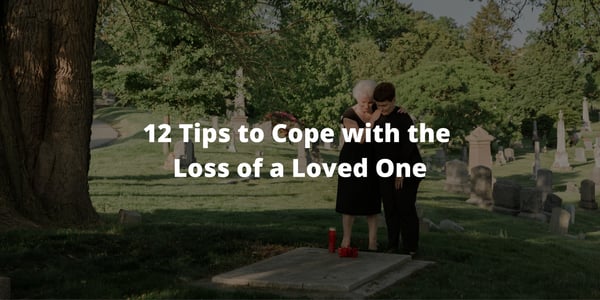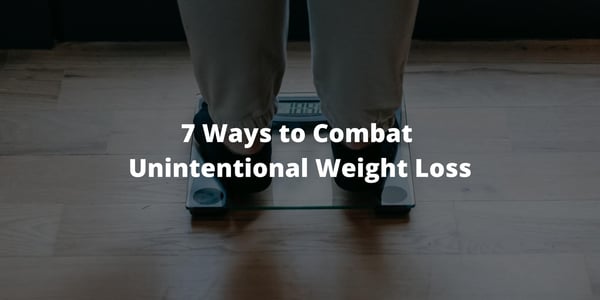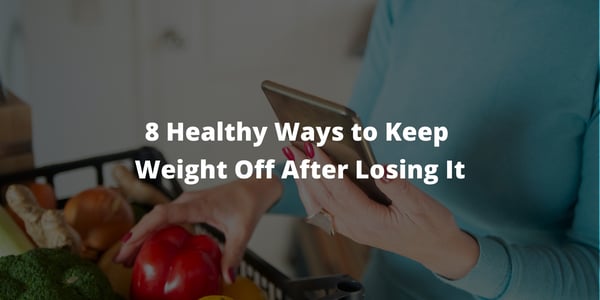Losing a loved one is one of the most challenging experiences anyone can face in life. It can be a...
Caloric Balance: Some Practical Ideas for Weight Loss
Obesity in the U.S. is an increasingly prevalent problem. The Center for Disease Control and Prevention indicated 42.4% of the population were considered obese during 2017-2018. This compares to 30.5% in 1999-2000. As a result, Americans are increasingly obsessed with finding ways to shed pounds.
My own battle of the bulge started early. Our family moved from Texas to Minnesota in February when I was 8. Before then, my siblings and I were active outside much of the year. However, upon moving to Minnesota in the depths of winter, we huddled around the TV eating Oreos.
My first realization of being overweight was when my clothing size began to include the word "husky," and one of my school friends nicknamed me "Tubby." It was the start of a lifetime weight control journey.
Over the years, I tried several diet plans. I was an early adherent of the low-carbohydrate Atkins diet. I remember feeling it was a bit leary about testing my urine to see if I was in the fat-burning ketosis state. I also tried fasting and grapefruit-centered diet, among others. Alas, my experience was typical. Any weight that came off eventually came back on.
In my 20's, I joined the running craze and eventually completed five marathons over the next two decades. Yet, despite the higher exercise level, I was still weighing in 20 to 30 pounds over the "ideal" weight for my age and height.
However, through trial and error over the years, I discovered some helpful techniques and ideas that have helped me lose and maintain a good weight. While I'm not perfect at following these guidelines, I've been reasonably successful in keeping the pounds off when I stick to them.
8 Practical Weight Loss Tips
-
Caloric Balance
.jpg?width=300&name=diet-695723_640%20(1).jpg) Weight control distills down to a simple balancing of the inputs and outputs. Too many calories in and not enough out leads to weight gain.
Weight control distills down to a simple balancing of the inputs and outputs. Too many calories in and not enough out leads to weight gain.Yet, I hated tracking the calories of my food and drink in a daily diary. Always searching for an ideal solution, I fantasized about a process that would automatically count the calories of anything I ate or drank. It would also measure the caloric output of my exercise. Then, upon reaching my daily input/output balance, an alarm would go off. With that information, I could make a better decision about whether or not to eat that dish of chocolate ice cream before bedtime.
I despaired that such a magical thing didn't exist, but then technology came to the rescue in the forms of the smartphone and smartwatch.
On my smartphone, I downloaded a free app called Lose It!. (There are many other similar apps available.) With the app, I enter the foods I eat each day. The app simplifies the data entry (hooray!) by providing a massive database of food options with calories. It also allows scanning of food packaging bar codes and remembering foods entered from other days. For example, if I eat the same breakfast daily, there's an option to select "Add yesterday's breakfast," and the entire meal is recorded in one click. When I reach my daily goal, the app shows the number of calories over the daily limit in red.
As for including exercise calories burned, a smartwatch exercise app serves as the tracker. The watch is integrated with my smartphone, so the number of exercise calories burned shows up each day in the calorie-counting app. In this way, both caloric input and output are tracked.
With knowledge, there is power. With better information about the balance of calories in and calories out, I feel more power about making eating and drinking choices.
While this has been a game-changer in my weight control efforts, I still need to make good choices. I've found other ideas to help me do this.
-
Eyes Versus Stomach
The old saying, "My eyes were bigger than my stomach," speaks to the notion that we often want more food than the body needs. For me, this plays out in how much I put on my plate. In the food tracking app, the weight or volume of the food is recorded, so I use a measuring cup or a food scale to control how much I take. Now that I have a feel for the relationship of portion size to calories, I have an easier time doling out the right amount of food even without the measuring equipment.
-
Slow It Down
I'm an anxious eater and drinker. So, when I sit down to eat, I tend to shovel it in fast. Unfortunately, this habit motivates me to overeat because it takes 20 minutes for the brain to raise the "I'm full" flag. By that time, I've loaded on unnecessary calories. Techniques to help slow down are drinking a large glass of water before eating, taking smaller portions, and then waiting 5-10 minutes before getting up for seconds.
-
Because It's There
 When asked why he wanted to climb Mount Everest, mountaineer George Mallory famously answered, "Because it's there." Likewise, I frequently would use the same rationale in devouring an overflowing plate of food. I instinctively felt the need to eat everything set before me.
When asked why he wanted to climb Mount Everest, mountaineer George Mallory famously answered, "Because it's there." Likewise, I frequently would use the same rationale in devouring an overflowing plate of food. I instinctively felt the need to eat everything set before me.My faulty thinking was, "If I don't eat all this food, some will go to waste." I eventually realized that my body was becoming the de facto garbage can for excess food. With that disgusting thought in mind, I've trained myself to leave food on the plate if necessary.
-
Restaurant Overkill
.jpg?width=300&name=pexels-ash-376464%20(1).jpg) Portion sizes in the average U.S. diet have increased over the past few decades. Restaurants have contributed to this trend, especially fast-food outlets. A 2019 review of three major studies showed caloric content of fast-food offerings increased significantly over the years, driven mainly by larger portion sizes.
Portion sizes in the average U.S. diet have increased over the past few decades. Restaurants have contributed to this trend, especially fast-food outlets. A 2019 review of three major studies showed caloric content of fast-food offerings increased significantly over the years, driven mainly by larger portion sizes.I used to order larger entrees when dining because I thought I wouldn't be satisfied if I ordered something smaller. Then I thought, "If I order the smaller portion and the restaurant would happily take my order for more food if I'm still hungry." Once I started doing this, I occasionally ordered more food but not often.
-
Appetizer Attitude
I've always been mystified by the term "appetizer," defining food that precedes the main course. It seems to suggest my appetite will be increased for the gustatorial experience yet to come. Unfortunately, I sometimes have eaten the equivalent of a regular meal before the entrée by mindlessly grazing among the appetizer trays. (Tortilla chips are the worst.)
For this type of food, I like the French word "hors d'oeuvres," which translates to 'outside the work." By classifying appetizers as separate meals, I've been able to manage this food experience better. For example, I modestly fill a single small plate one time. This helps prevent appetizer overload.
-
Alcohol… Resistance is Futile
In Star Trek: The Next Generation, the Borg aliens would tell their victims, "Resistance is futile." To me, alcohol is the Borg in my efforts at managing caloric balance.
Alcohol is most notorious for delivering lots of calories by volume. For example, two pints of my beloved India Pale Ale clock in at 500 calories, the equivalent of a generous chocolate cake slice. On the other hand, many alcoholic options have significantly fewer calories.
I contend, however, the more significant threat from alcohol is the lowering of inhibitions. All the helpful caloric balance guidelines noted above get tossed overboard after a few drinks. Resistance may not be futile, but alcohol makes it more difficult, greatly increasing the danger of food binging.
My best success in resisting the alcohol Borg is to limit myself to two drinks per day, thereby cutting down on alcohol calories and keeping my good inhibitions raised.
-
Taking a Break
Despite all these helpful ideas for watching my weight, it sometimes feels stressful to stay on track. As a result, I allow myself to ease my eating and drinking guidelines on weekends, vacations, and holidays. This has helped me to stick to the overall plan in the long run.
The risk is taking too many break days in a row. It amazes me how fast weight can come back on. Weekends, for instance, can include Friday, Saturday, and Sunday. Consider treating Sunday like a weekday in terms of eating to avoid having too many "break" days in a row.
Staying in caloric balance can help in the quest to maintain a healthy weight. Experiment with these guidelines and others to find a combination of techniques that helps you best manage the input/output equation.
Related Content:






